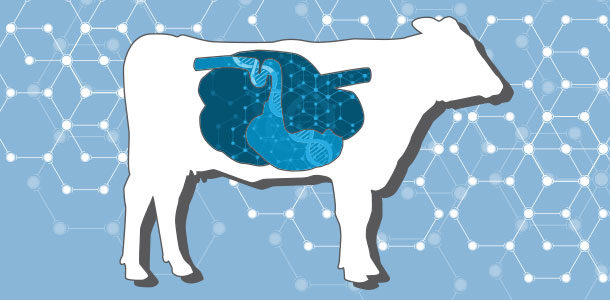Rumen-protected lysine (Lys) and methionine (Met) are becoming common fixtures in dairy rations, particularly in those where milk is sold not only for volume, but also for the component values.
Research and practice have shown repeatedly that improving the Lys and Met profiles in the diet (where increased dietary levels of these limiting amino acids are available to the small intestine) results in increased milk volume, protein and fat yields.
Feeding rumen-protected sources of these essential amino acids (AA) has also been shown by numerous studies to improve the status of these nutrients in the cow, where they are critical in numerous physiological and metabolic processes.
Additional benefits have been found from the feeding or supplementation of these feed ingredients, which have been proven of value to the health and performance of the cow. Additionally, use in transition and during periods of stress has also shown merit. We’ll take some time here to discuss some of the results that have been observed.
Reproduction and embryo development
Many AAs can have positive effects on physiological processes that are independent of their effects on synthesis of proteins. This has been termed the “functional effects” of amino acids. Of the AAs considered rate-limiting, Met is the best studied functional amino acid linked to reproduction.
Arginine has also been linked to reproduction, but it is currently not given as much attention commercially since it has not been proven to significantly affect milk and component production.
While the effects of AA supplementation on reproduction in dairy cattle have not been evaluated adequately or with suitable statistical power, some studies have begun to explore these potential opportunities.
Researchers observed several positive effects on reproduction parameters when a rumen-protected source of Met was added to the ration. Cows fed rumen-protected Met (RPM) showed an increase in dry matter intake as well as milk fat and protein percentages (P<.01) and a tendency for increased milk volume.
Treatment-fed cows also exhibited improved body condition scores (BCS) when compared with control cows. This resulted in earlier postpartum estrus expression in RPM-fed cows compared with control (P<0.01).
Subsequently, treated cattle had an earlier first A.I. (P<0.01) and a tendency for an earlier pregnancy diagnosis. Days open were fewer (P<0.04), and the calving interval was numerically shorter for RPM- fed cattle.
Others observed that amino acids tend to be more concentrated in the oviduct and uterine tissues than in the blood. During pregnancy, particularly during the period of embryo elongation (day 14 to 18 of development), additional mechanisms further concentrate AAs in the uterine lumen.
In dairy cattle, the three AAs considered rate-limiting for milk production, Lys, Met and histidine (His), are the AAs with the greatest increase in concentrations in these tissues during this period. On average, a 10-times increase in concentrations of these AAs is observed during pregnancy.
While the AA requirements of the developing embryo and subsequent complete effects of AA supplementation on embryo development have not been identified, it has been shown that during these early stages Met has an essential role in the development of the bovine embryo, from morula to blastocyst stage.
Further research is needed to evaluate whether supplementation of essential AAs to lactating cows has a definitive beneficial impact on embryo growth and survival, and if these changes in the early embryo will alter pregnancy outcomes or physiology and performance in the resulting calf.
Ongoing research into fetal or developmental programming is now considering the AA status of the cow at conception and during the weeks following.
Transition and stress
Supplementation of rumen-protected AAs during transition is an emerging practice as research illustrates the positive effects of AAs, such as Met’s ability to improve dry matter intake, milk yield and milk protein yield. One particular known response of Met supplementation during the transition period includes a role in the reduction of the incidence of fatty livers.
Met has been shown to stimulate secretion of very low density lipoproteins (VLDLs), which transport triglycerides away from the liver and toward effective utilization in the udder. Theoretically, this should result in a faster return to positive energy balance and improved liver function, yielding other positive metabolic and physiological effects.
Met is the key precursor of glutathione, a primary antioxidant in the cow. During the transition period, a cow’s immune system is generally depressed. By feeding supplemental RPM, circulating glutathione levels should be increased, resulting in increased antioxidant activity and enhanced immune function in the cow.
The stress effects common during transition are accentuated during high temperatures. Thus, the combination of heat and transition stress has a multiplied effect on the cow. A study by Plakidou-Dymock and McGivan reports that under heat stress conditions, inadequate dietary levels of both Lys and Met increases stress effects in the animal, resulting in a further depression of immune response.
Supplemental RPM has been shown to aid in the reduction of stress during high temperature periods, particularly when these are combined with transition stress. This can stimulate immune response as well as promote improvements in dry matter intake and concurrent support of milk volumes and components post-freshening.
Dietary evaluations during these periods should include analysis of ration metabolizable protein AA concentrations to determine if any deficiencies exist and to what degree supplementation is needed to properly balance the diet.
Conclusions
As more is learned about the overall effects of AAs in the dairy cow’s diet, more critical roles in the animal’s health, metabolism and physiology will be identified. AA balancing and the use of rumen-protected sources of these nutrients is rapidly becoming commonplace, not only for the obvious economic benefits, but also to improve the health and well-being of the animal at all stages of life and production. PD
References omitted due to spacebut are available upon request. Click here to email an editor.

-
Stephen Blezinger
- Business Development Manager
- HJ Baker and Brother Inc.
- Email Stephen Blezinger






